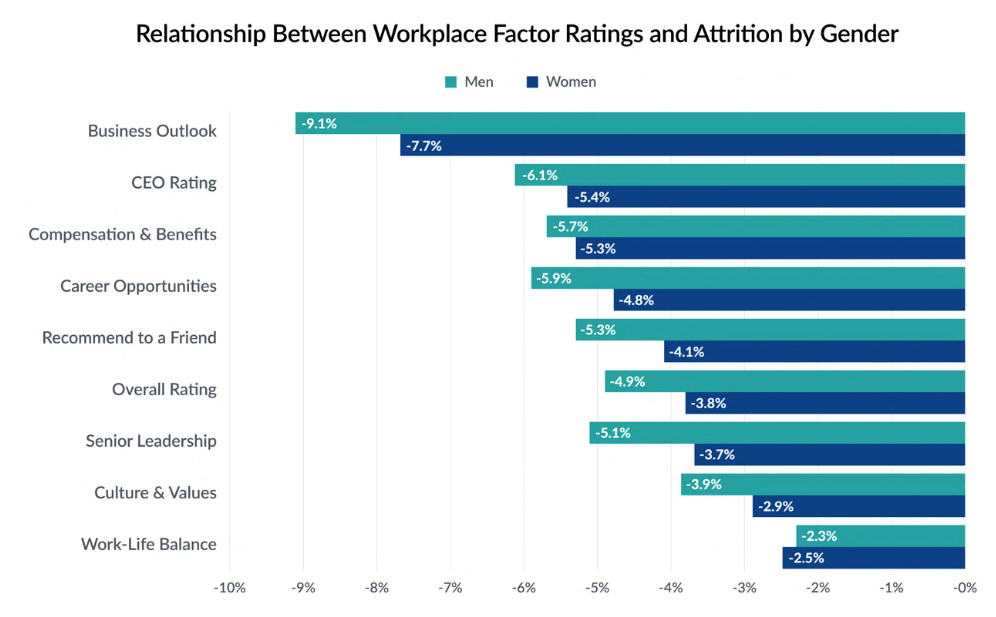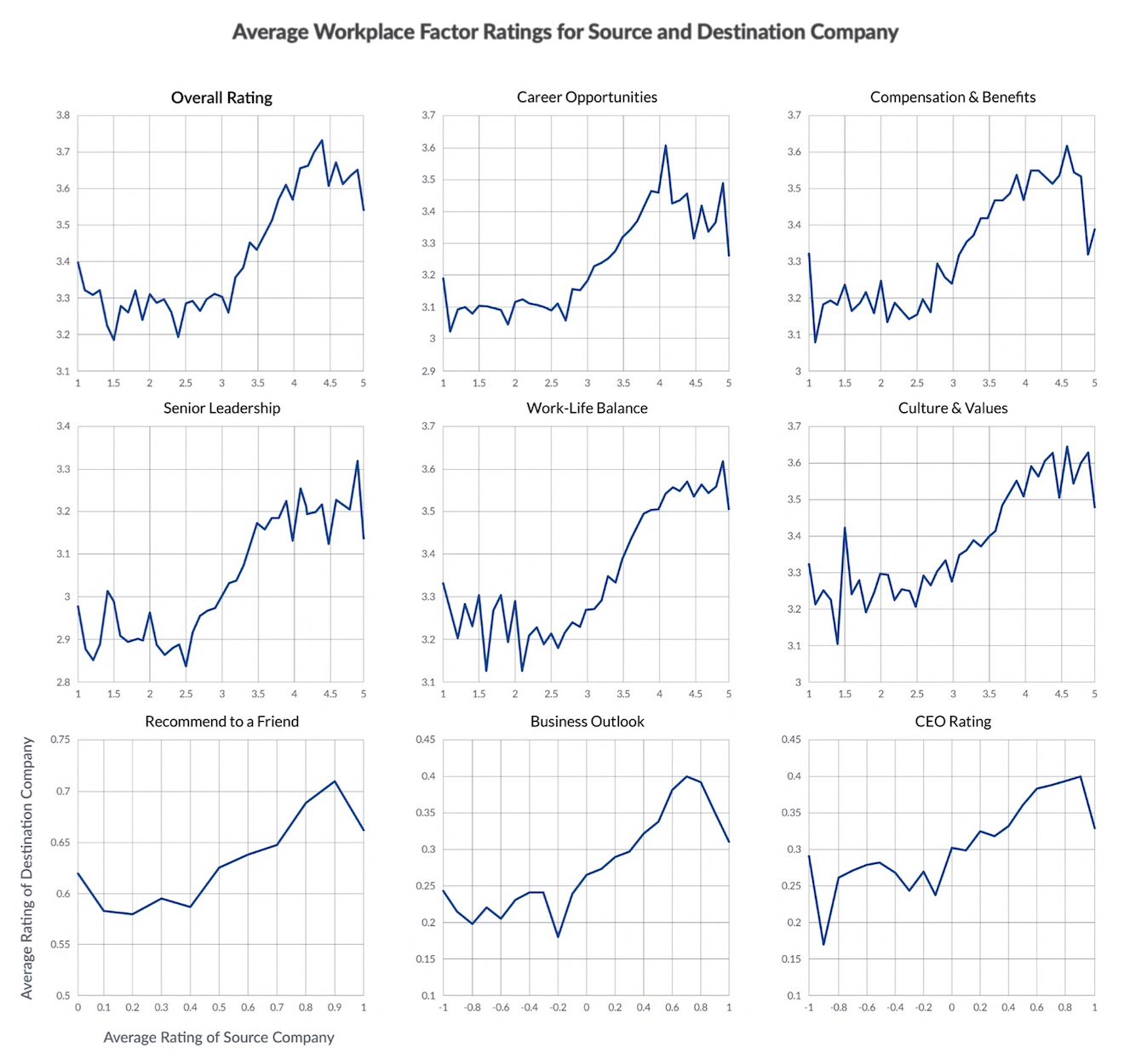Revelio Labs & Glassdoor Collaboration: What Workplace Factors Drive Attrition?
Growth-based factors play the biggest role

Workforce attrition -- the loss of employees to turnover, retirement, or layoffs -- is one of the most important challenges employers face. Excessive attrition can hurt business performance by impinging on productivity, morale and institutional knowledge. Understanding employment dynamics is especially timely given the increasing rate of workers leaving their job since the end of the Great Recession and the disruption caused by the Covid-19 pandemic.
Data and transparency in this domain have historically been in short supply. But for the first time, Revelio Labs and Glassdoor are partnering to advance a common understanding of how labor markets function. You can check out the full paper here.
Using data from Revelio Labs and Glassdoor, we’re able to offer a unique window into the drivers of attrition. Below is the list of company ratings compared to their impacts on workforce attrition:

It is interesting to note that ‘Business Outlook’ is a significantly bigger driver of attrition than any other category. Additionally, growth-based workplace factors like ‘Compensation & Benefits’ and ‘Career Opportunities’ are more significant drivers of retention than experience-based factors like ‘Culture & Values’ and ‘Work-Life Balance’.
What drives attrition for one set of employees may not, however, be the same driver for another. Below, we show the attrition correlations for men and women:

In general, women seem to be less sensitive to company factors than men. The most striking exception is ‘Work-Life Balance’, where women have a stronger negative response to a lower rating.
Generational and educational differences for attrition are available in the full paper.
Sign up for our newsletter
Our weekly data driven newsletter provides in-depth analysis of workforce trends and news, delivered straight to your inbox!
One question that came up in our research was whether the factor most driving a worker to leave actually led to a different outcome in their next position. Surprisingly, we find that people who leave companies with deficiencies in a particular area tend to end up in companies that are also relatively weak in that rating. And conversely, people who start off at companies that are strong in a particular area also end up in companies that are strong in that area.
There are several reasons that can explain this finding: (i) competing employers have similar talent practices, (ii) employees at lower-rated companies have less market power, and (iii) employees tend to match to employers that focus on workplace factors they value.

Key takeaways:
- Even though experience-based workplace factors are important determinants of overall employee satisfaction, they are weaker predictors of attrition than growth-based workplace factors. While experience-based factors determine the day-to-day employee experience, more durable factors like compensation and/or career growth more likely drive employees to make the leap to a new job.
- The reasons for attrition can be different for different groups of employees. For example, ‘Work-Life Balance’ is a stronger predictor of attrition for women than men.
- For transitioning employees, we find a surprising persistence in satisfaction across their source and destination companies. While there is strong regression to the mean, employees tend to end up in companies with similar values to their previous companies.
If you have any ideas of other workforce attrition metrics to track or would like to hear more about Revelio Labs, please feel free to reach out.


